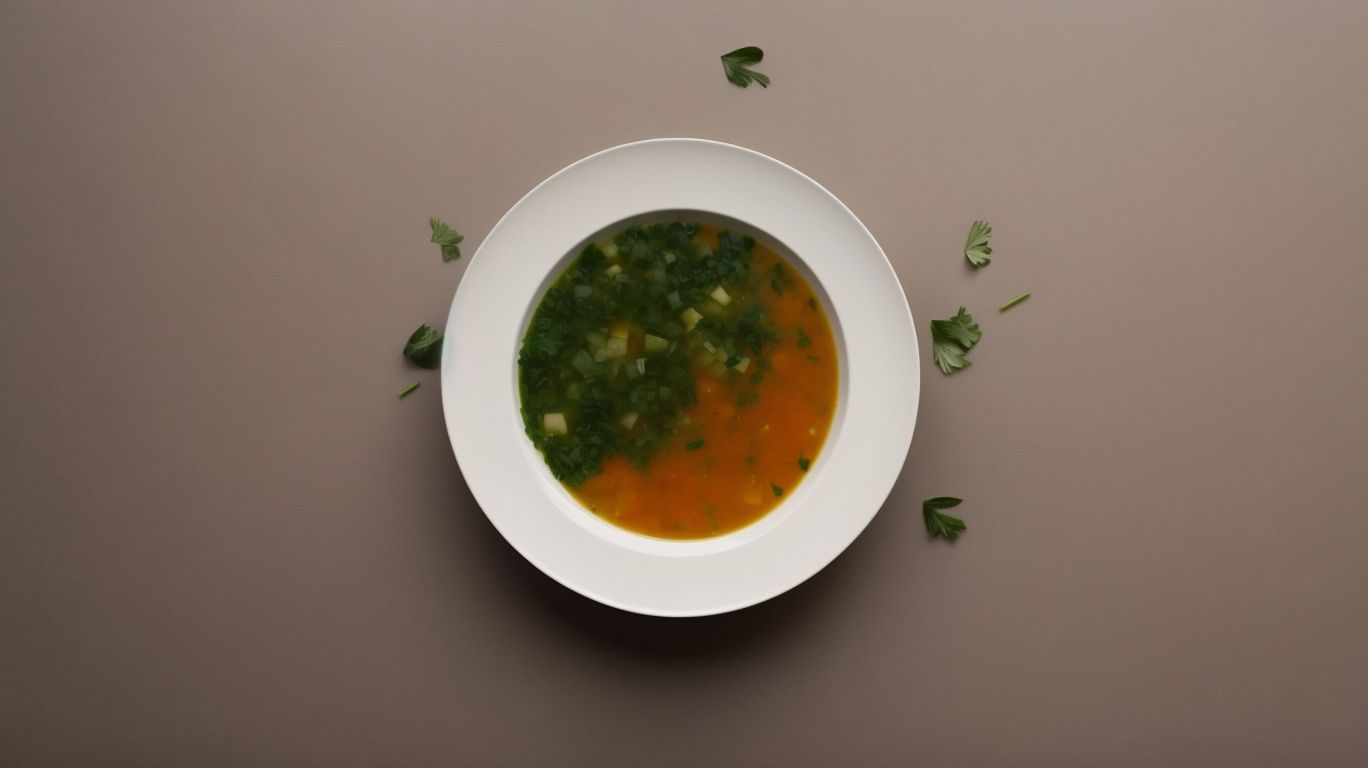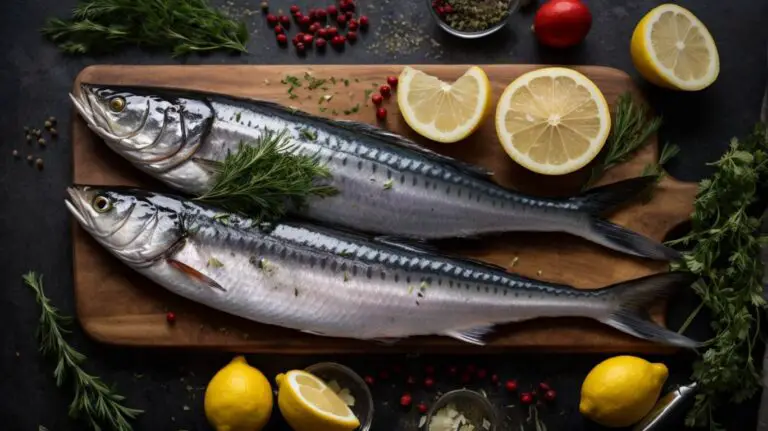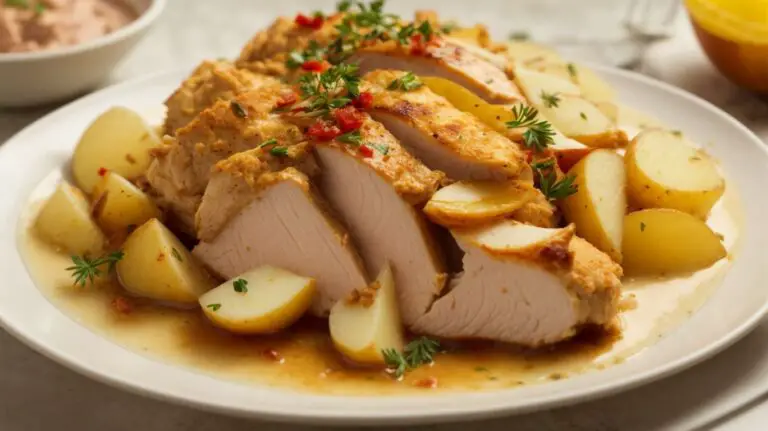How to Cook Vegetable Soup With Waterleaf?
Are you looking to add a nutritious and delicious leafy green to your diet? Look no further than waterleaf!
We will explore the nutritional and health benefits of waterleaf, as well as provide tips for cooking with this versatile ingredient.
From promoting healthy digestion to boosting your immune system, waterleaf is a powerhouse of nutrients. Learn how to make a flavorful vegetable soup with waterleaf and how to store any leftovers for future enjoyment. Let’s get cooking!
Key Takeaways:
What Is Waterleaf?
Waterleaf is a popular green leafy vegetable commonly used in Nigerian cuisine, especially in preparing delicious vegetable soups.
Known for its slightly tangy and earthy flavor, waterleaf adds a unique taste and texture to traditional Nigerian dishes. This versatile vegetable is not only delicious but also packed with essential nutrients such as vitamins A, C, and K, as well as minerals like calcium and iron. In Nigerian recipes, waterleaf is often paired with other ingredients like scent leaf to enhance the overall aroma and taste of vegetable soups.
Whether used in Egusi soup, Efo Riro, or Edikang Ikong soup, waterleaf brings a fresh and vibrant element to these hearty dishes. Its tender leaves wilt beautifully in soups, releasing a burst of flavors that complement the rich broth and hearty protein sources commonly found in Nigerian cuisine.
What Are the Nutritional Benefits of Waterleaf?
Waterleaf offers a plethora of nutritional benefits, being rich in vitamins, minerals, antioxidants, and surprisingly low in calories.
For those looking to enhance the nutritional value of their meals without adding excessive calories, waterleaf is a fantastic addition. Whether it’s used in hearty soups, vibrant vegetable recipes, or traditional Nigerian cuisine, this leafy green packs a punch when it comes to health benefits.
Waterleaf’s high vitamin content, including Vitamins A, C, and K, helps support overall immunity and skin health. Its mineral profile, boasting potassium, calcium, and iron, aids in maintaining proper bodily functions and bone health.
The antioxidant properties of waterleaf contribute to fighting oxidative stress in the body, protecting cells from damage and promoting overall well-being.
High in Vitamins and Minerals
Waterleaf is a powerhouse of essential vitamins and minerals, making it a nutritious addition to dishes like vegetable soups.
This leafy green vegetable is packed with vitamins A, C, and K, along with iron, calcium, and magnesium, which are vital for maintaining overall health and well-being. The combination of these nutrients not only boosts your immune system but also supports bone health and proper blood clotting.
When added to dishes such as vegetable soups with ingredients like beef, palm oil, and crayfish, waterleaf enhances the flavor and aroma due to its subtle peppery taste and tender texture.
Rich in Antioxidants
Waterleaf’s antioxidant properties are enhanced by ingredients like palm oil, dry fish, and crayfish, making it a flavorful and healthy choice for culinary competition.
Dry fish and crayfish are not only known for their rich flavors but also for their amazing contributions to the antioxidant content of dishes.
When combined with the unique properties of waterleaf, these ingredients create a harmonious blend that not only tantalizes the taste buds but also boosts the nutritional value of the meal.
The presence of palm oil further enhances the absorption of antioxidants, ensuring that every bite is not only delicious but also beneficial for overall health.
Low in Calories
Waterleaf’s low-calorie nature makes it an ideal ingredient for recipes that focus on healthy eating and delicious flavors, such as vegetable soups popular in Lagos.
Adding waterleaf to your dishes not only enhances the nutrient content but also the overall taste profile. The subtle bitterness of waterleaf pairs wonderfully with ingredients like:
- chocolate spread for a decadent twist on breakfast toast,
- maize and beans mix for a comforting and filling stew,
- or even noodles for a quick and flavorful stir-fry.
Its versatility allows you to experiment with various cuisines, creating diverse and enticing meals that cater to different preferences.
What Are the Health Benefits of Waterleaf?
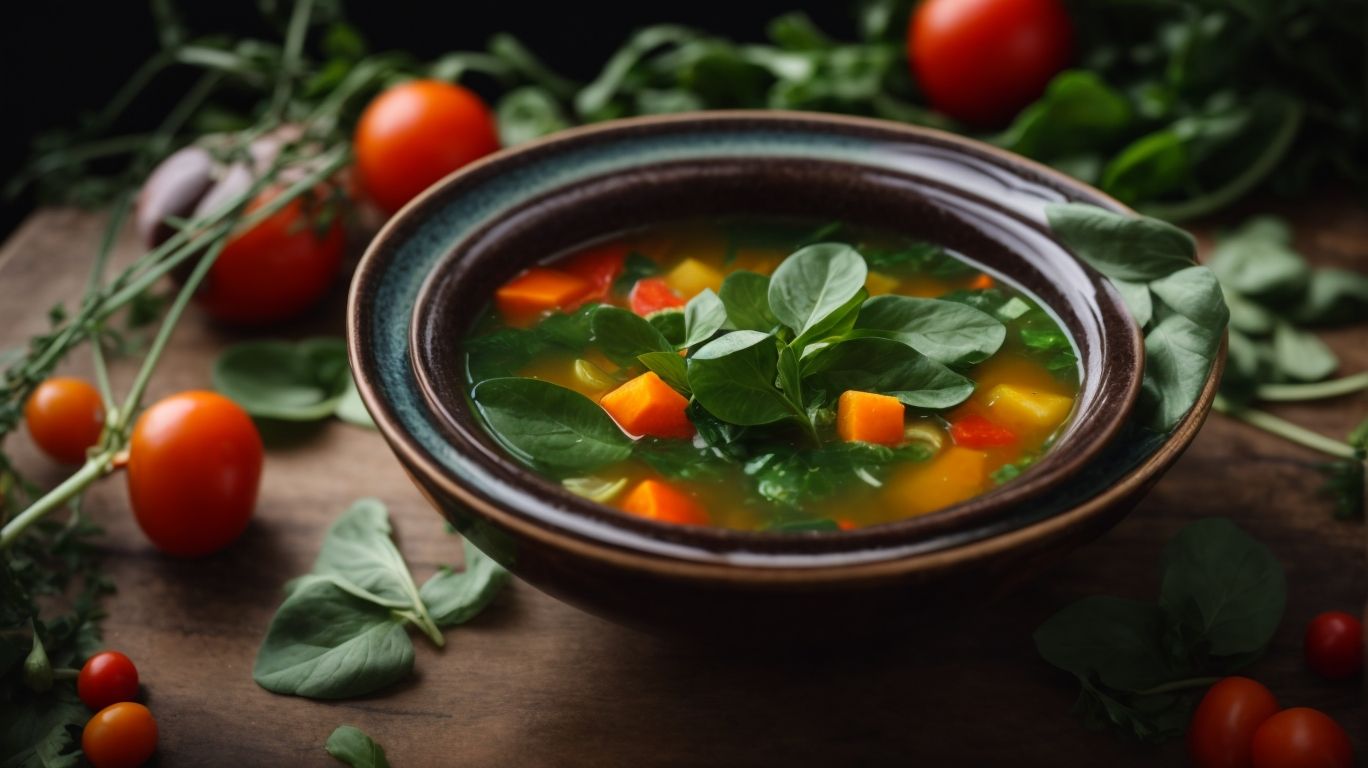
Credits: Poormet.Com – Matthew Brown
Waterleaf boasts numerous health benefits in Nigerian cuisine, including promoting healthy digestion, boosting the immune system, and regulating blood sugar levels.
Waterleaf, also known as Gbure in Yoruba or Mgbolodi in Igbo, is a versatile leafy green that not only adds a unique flavor to dishes but also packs a nutritional punch.
One of its standout features is its ability to aid in digestion by being rich in fiber, which helps to regulate bowel movements and prevent constipation.
The high content of essential vitamins and minerals, such as vitamin C and iron, in waterleaf contributes significantly to enhancing the immune system and supporting overall health.
For those looking to stabilize blood sugar levels, waterleaf’s natural properties can be beneficial, especially for individuals managing diabetes or seeking to prevent spikes in glucose levels.
Promotes Healthy Digestion
Waterleaf’s inclusion of ingredients like stock fish, dry fish, and palm oil aids in promoting healthy digestion, making it a staple in dishes like vegetable soups with Okpei and Ponmo.
Stock fish is rich in essential nutrients like Omega-3 fatty acids, which are known for their anti-inflammatory properties, helping to soothe the digestive system. Dry fish, on the other hand, adds a savory umami flavor to the dish, enhancing its taste profile.
Palm oil, a common cooking oil in Nigerian cuisine, not only gives a vibrant color to the dish but also contains antioxidants that support gut health. The combination of these ingredients in waterleaf-based dishes creates a flavorful and nutritious meal.
Boosts Immune System
Waterleaf’s immune-boosting properties are highlighted in dishes like Edikang-Ikong Soup and Egusi Soup, incorporating Ugu Leaf for additional health benefits.
Waterleaf, a popular leafy green vegetable in Nigeria, is not only delicious but also packed with nutrients that can work wonders for your immune system. In traditional Nigerian cuisine, incorporating Waterleaf in dishes like Edikang-Ikong Soup and Egusi Soup is a common practice due to its health benefits. When paired with Ugu Leaf, another nutrient-rich green, the combination provides a powerhouse of vitamins and antioxidants that can help strengthen your body’s defenses against illnesses and diseases. It’s no wonder that these Friday soup favorites are not only tasty but also contribute to overall well-being.
Regulates Blood Sugar Levels
Waterleaf’s ability to regulate blood sugar levels has made it a favorite ingredient in Nigerian cuisine, especially among health-conscious individuals in Lagos and beyond.
People in Lagos often incorporate waterleaf not only for its health benefits but also for its unique taste. The versatility of waterleaf allows it to be used in various popular dishes such as soups, stews, and salads, enhancing both the flavor and nutritional value of the meal. This vegetable has gained significant recognition for its role in promoting overall well-being, leading to an increase in demand for waterleaf across markets in the region.
What Are Some Tips for Cooking with Waterleaf?
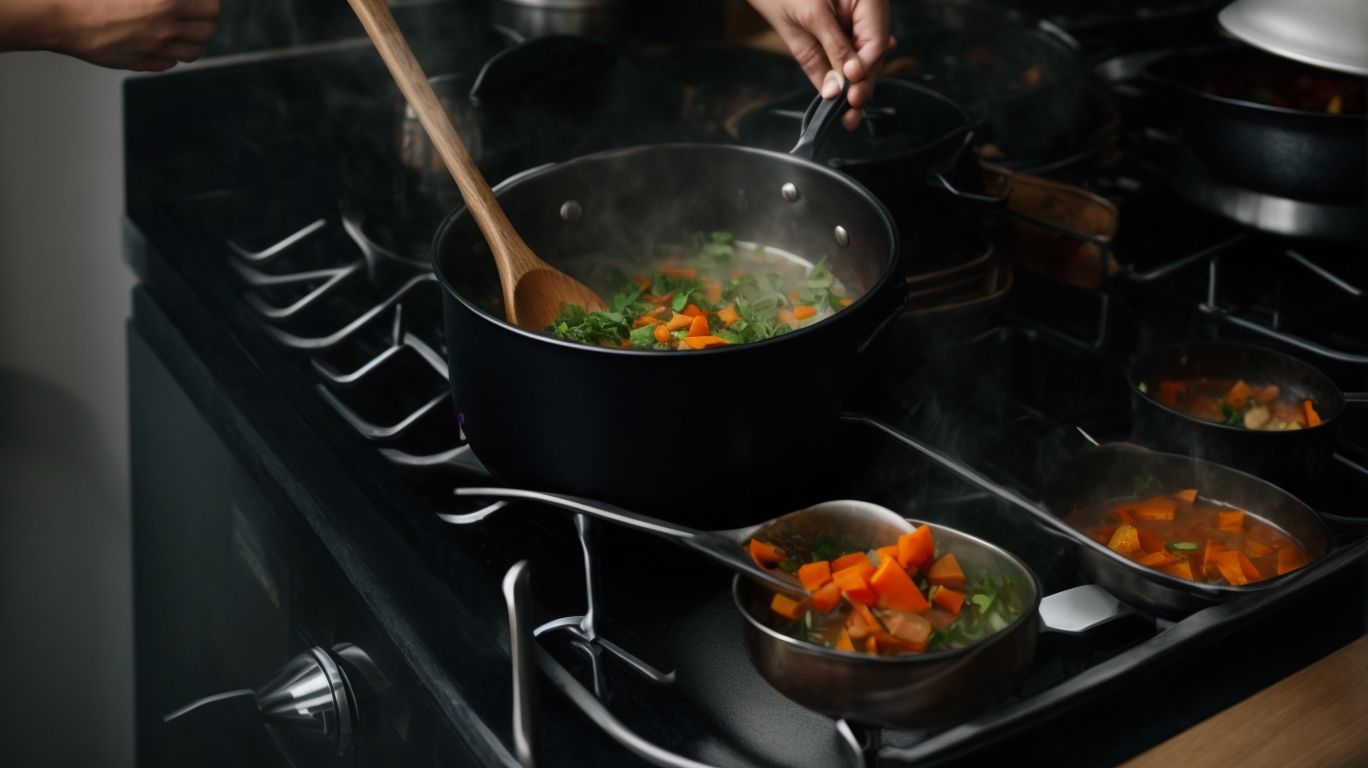
Credits: Poormet.Com – Vincent Sanchez
Cooking with waterleaf requires attention to detail, starting with selecting fresh and tender leaves, followed by proper washing and draining before using them in dishes with short cooking times characteristic of Nigerian cuisine.
Regarding waterleaf, freshness is key to preserving its vibrant flavors and textures. The scent leaf aroma of this leafy green adds a unique touch to dishes, and you want to capture that essence by using it at its peak.
- Before cooking, give the waterleaf a good rinse under cold water to remove any dirt or impurities.
- To enhance the taste, you can soak the leaves in cold water for a few minutes to revitalize them.
- For quick-cooking recipes like soups or stir-fries, add the waterleaf towards the end of the cooking process to maintain its fresh taste and nutrients.
Choose Fresh and Tender Leaves
Selecting fresh and tender waterleaf leaves is crucial for ensuring a delightful aroma and flavor profile in dishes prepared with ingredients like beef, palm oil, crayfish, and stock fish.
Regarding cooking, the freshness of waterleaf leaves plays a significant role in enhancing the overall taste experience of a dish. Fresh leaves infuse a vibrant green color and a subtle bitterness that complements the richness of ingredients like beef and lusciousness of palm oil.
The delicate fragrance of fresh waterleaf leaves harmonizes with the earthy notes of crayfish and the robust umami of stock fish, creating a symphony of flavors that truly elevates the gastronomic journey.
Wash and Drain Properly
Washing and draining waterleaf properly before use, especially in recipes with locust bean and cow skin, is essential to maintain the desired aroma and quality of the dish.
When preparing waterleaf, it is vital to first wash it thoroughly to remove any dirt or debris. Start by placing the waterleaf in a bowl of cold water and gently agitating it to dislodge any impurities.
- Once washed, let the waterleaf drain in a colander to remove excess water.
- Avoid pressing or squeezing the leaves, as this can affect the texture.
Proper washing and draining help to retain the freshness and nutritional value of waterleaf, ensuring that it enhances the overall flavor of your dish when cooked with ingredients like locust bean and cow skin.
Use in Dishes with Short Cooking Time
Incorporating waterleaf into dishes with short cooking times is ideal for preserving its aroma and nutritional value, making it a popular choice in culinary competitions and recipe sharing.
Waterleaf’s delicate flavor profile shines through when quickly cooked, adding a refreshing twist to a variety of dishes. Being rich in essential nutrients such as vitamins A, C, and K, as well as minerals like calcium and iron, it not only enhances the taste but also boosts the nutritional content of the meal. Its versatility makes it a favorite ingredient among chefs looking to create innovative recipes that stand out in competitions. The vibrant color of waterleaf adds visual appeal to dishes, making them even more enticing for food enthusiasts.
How to Make Vegetable Soup with Waterleaf?
Creating a delectable vegetable soup with waterleaf involves a series of steps, from gathering the necessary ingredients and preparing the vegetables to cooking the soup, adding waterleaf and seasonings, and finally simmering to perfection before serving.
Start by selecting a variety of fresh vegetables such as tomatoes, bell peppers, onions, and waterleaf. Take the time to wash and chop them into bite-sized pieces for easy cooking and consumption.
Next, heat a pot over medium heat and add some oil. Once the oil is hot, sauté the onions until they are translucent, then add the tomatoes and bell peppers to cook until softened.
After the base vegetables have cooked down, introduce the waterleaf into the pot. This leafy green vegetable adds a unique flavor and texture to the soup.
Season the soup with spices like salt, pepper, and a hint of local seasoning for an authentic Nigerian touch.
Let the soup simmer on low heat, allowing all the flavors to meld together and create a harmonious blend.
Gather Ingredients
To start making vegetable soup with waterleaf, gather essential ingredients like dry fish, palm oil, crayfish, stock fish, and seasoning cubes to infuse rich flavors into the dish.
Dry fish adds a depth of umami flavor, while palm oil provides a luscious richness that is essential in Nigerian cuisine. Crayfish, with its earthy and slightly smoky taste, brings a distinct aroma to the soup. Stock fish contributes a unique texture and savory taste, elevating the overall complexity of the dish. Seasoning cubes enhance the flavors by adding a balanced blend of spices and salt, creating a harmonious taste profile.
Prepare the Vegetables
After gathering ingredients, the next step is to prepare vegetables like waterleaf, ensuring proper seasoning with salt, locust bean, and cow skin to enhance the aroma and taste of the soup.
Once you have meticulously washed and chopped the waterleaf, set it aside. Then, begin by seasoning the soup with a sprinkle of salt, making sure not to overpower the flavors but to bring out the natural taste of the vegetables.
Next, crush the locust beans to release their rich nutty flavor into the pot, creating a depth of taste that complements the freshness of the veggies. As the soup simmers, add the tender cow skin to infuse a savory richness that will leave your taste buds dancing with delight.
Cook the Soup
Once the vegetables are ready, proceed to cook the soup by following traditional recipes or exploring online resources such as the Nairaland Forum, Google LLC, or YouTube for innovative cooking methods and techniques.
Traditional recipes for waterleaf soup often involve a mix of local spices and techniques passed down through generations, adding a distinct flavor to the dish. On the other hand, online resources provide a diverse range of interpretations and variations of the soup, catering to different preferences and dietary restrictions.
Browsing through the Nairaland Forum can give you insights into regional nuances and personal touches in preparing waterleaf soup, while a quick search on Google LLC may lead you to articles discussing the health benefits of the main ingredients used in the soup.
Watching YouTube tutorials can be beneficial for visual learners, as they demonstrate step-by-step processes and various cooking hacks that can elevate your waterleaf soup to a gourmet level.
Add Waterleaf and Seasonings
Incorporate waterleaf and seasonings like salt and Ugu Leaf into the soup, drawing inspiration from traditional recipes like Edikang-Ikong Soup and Egusi Soup for a flavorful and authentic culinary experience.
Waterleaf is a popular leafy vegetable used in Nigerian cuisine, known for its slightly tangy flavor that adds a refreshing twist to dishes.
Regarding seasonings, salt is the essential ingredient that helps enhance the flavors of the vegetables and herbs in the soup.
Ugu Leaf, also known as fluted pumpkin leaf, is another staple in Nigerian cooking, contributing a distinct earthy taste to the soup.
By combining these elements with the rich and hearty flavors found in Edikang-Ikong and Egusi Soup, you can create a delicious and comforting dish that captures the essence of traditional Nigerian cuisine.
Simmer and Serve
Allow the soup to simmer gently, infusing all the flavors and aromas together before serving, ensuring a delightful dining experience for guests like doggedfighter, gloryhomemaker, Karen2024, and efelicity.
This slow simmering process is crucial to allow the ingredients to meld, creating a rich and harmonious taste profile that will surely impress your diners. It’s like orchestrating a symphony of flavors in a single pot, where every element plays its part in perfect harmony.
- By taking your time and letting the soup simmer, you are allowing the magic to happen. The aroma that fills your kitchen promises a feast for the senses that your guests will appreciate.
- Remember, a rushed dish rarely achieves the depth of flavor and satisfaction that comes from patient simmering.
How to Store Leftover Waterleaf Soup?
Properly storing leftover waterleaf soup with ingredients like beef, Shaki, stock fish, and palm oil ensures its freshness and taste for future consumption.
To maintain the freshness of the waterleaf soup, it’s essential to properly portion it into airtight containers, ensuring all ingredients are well-preserved. When refrigerating, make sure the soup is cooled to room temperature before transferring. For longer-term storage, consider freezing the soup in freezer-safe bags or containers, labeling them with the date for reference. When reheating, do so gently over low heat to avoid overcooking the beef and maintain the flavors of the Nigerian cuisine. Adding a fresh drizzle of palm oil before serving enhances the soup’s authentic taste.
Refrigerate in an Airtight Container
For short-term storage, refrigerate the leftover waterleaf soup in an airtight container to preserve its taste and quality, ideal for enjoying a quick meal in Lagos or on a busy Friday.
By storing the soup properly in the refrigerator, you not only maintain its freshness but also ensure that it remains safe for consumption. In a bustling city like Lagos, where time is often of the essence, having ready-to-eat meals on hand can be a lifesaver. Airtight containers help prevent any odors from seeping into the soup, keeping its flavors intact. This simple storage practice allows you to savor the flavors of the waterleaf soup without compromising on taste or convenience.
Freeze for Longer Storage
To extend the shelf life of waterleaf soup, consider freezing it in portions for longer storage, ensuring you have convenient meals ready, whether it’s a busy day in Lagos or a craving for chocolate spread, maize & beans mix, or noodles.
Freezing leftover waterleaf soup not only helps in preserving its freshness but also allows you to enjoy a variety of meals without the need for extensive preparation. One of the key advantages of this method is the ability to have portioned servings, enabling you to defrost only what you need, minimizing waste and maximizing convenience.
Imagine coming home after a hectic day in Lagos, and all you have to do is heat up a portion of delicious waterleaf soup, paired with your favorite accompaniments. It’s like having a homemade meal at your fingertips, eliminating the stress of cooking from scratch.
Frequently Asked Questions
What is Waterleaf and why is it used in vegetable soup?
Waterleaf is a green, leafy vegetable commonly used in Nigerian cuisine. It is known for its high nutritional value and adds a unique flavor to dishes like vegetable soup.
Can I substitute Waterleaf with other greens in the soup?
Yes, you can substitute Waterleaf with other greens like spinach, kale, or collard greens. However, keep in mind that the flavor and texture of the soup may be slightly different.
How do I properly clean Waterleaf before adding it to the soup?
To clean Waterleaf, remove the stems and rinse the leaves thoroughly under running water. Then, soak the leaves in a bowl of cold water for a few minutes before draining and patting them dry.
Do I need to blanch Waterleaf before adding it to the soup?
No, blanching Waterleaf is not necessary. Simply add it to the soup towards the end of the cooking process and allow it to wilt and cook in the broth.
How can I make my vegetable soup with Waterleaf more flavorful?
Adding other ingredients like onions, garlic, and spices can enhance the overall flavor of the soup. You can also use a homemade or store-bought vegetable broth as the base for a more robust flavor.
What is the best way to store leftover vegetable soup with Waterleaf?
Allow the soup to cool before transferring it to an airtight container or resealable bag. Store it in the refrigerator for up to 3 days or in the freezer for up to 3 months. Reheat on the stovetop or in the microwave before serving.

